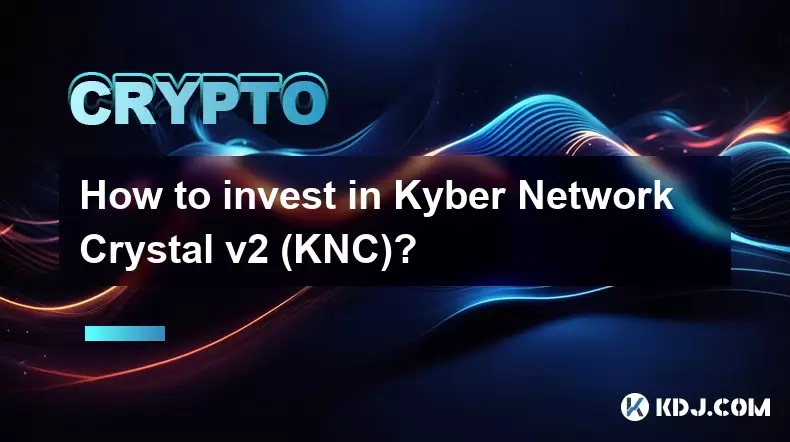-
 Bitcoin
Bitcoin $119200
-0.90% -
 Ethereum
Ethereum $4589
-2.03% -
 XRP
XRP $3.117
-4.82% -
 Tether USDt
Tether USDt $1.000
0.04% -
 BNB
BNB $839.9
-1.38% -
 Solana
Solana $196.4
-2.55% -
 USDC
USDC $0.9999
0.00% -
 Dogecoin
Dogecoin $0.2270
-7.72% -
 TRON
TRON $0.3605
0.74% -
 Cardano
Cardano $0.9306
5.96% -
 Chainlink
Chainlink $22.51
-5.00% -
 Hyperliquid
Hyperliquid $45.20
-1.80% -
 Sui
Sui $3.794
-5.63% -
 Stellar
Stellar $0.4259
-5.59% -
 Bitcoin Cash
Bitcoin Cash $593.1
-2.38% -
 Ethena USDe
Ethena USDe $1.000
-0.01% -
 Hedera
Hedera $0.2540
-3.84% -
 Avalanche
Avalanche $23.93
-4.50% -
 Litecoin
Litecoin $124.1
-5.62% -
 Toncoin
Toncoin $3.398
-1.33% -
 UNUS SED LEO
UNUS SED LEO $9.274
0.30% -
 Shiba Inu
Shiba Inu $0.00001305
-5.57% -
 Uniswap
Uniswap $11.06
-8.90% -
 Polkadot
Polkadot $4.034
-4.88% -
 OKB
OKB $99.33
-10.53% -
 Dai
Dai $0.9999
-0.01% -
 Bitget Token
Bitget Token $4.638
-3.60% -
 Cronos
Cronos $0.1541
-8.58% -
 Aave
Aave $313.0
-4.94% -
 Pepe
Pepe $0.00001127
-8.04%
What is AVAX coin? How does it work?
AVAX, Avalanche's native token, fuels its high-throughput blockchain, securing the network via staking and powering transactions & dApp interactions. Its value hinges on Avalanche's success and adoption.
Mar 11, 2025 at 02:05 pm

Key Points:
- AVAX is the native cryptocurrency of the Avalanche blockchain platform.
- Avalanche utilizes a novel consensus mechanism, offering high throughput and low latency.
- AVAX is used for transaction fees, staking, and securing the network.
- Avalanche supports the creation of decentralized applications (dApps) and custom blockchains.
- Understanding AVAX requires understanding Avalanche's unique architecture and functionality.
What is AVAX Coin?
AVAX is the native token of the Avalanche blockchain. It fuels the entire Avalanche ecosystem, serving as the primary medium of exchange for transactions and fees within the network. Its functionality extends beyond simple transactions; AVAX is also crucial for securing the network through staking and participating in governance decisions. The value of AVAX is intrinsically tied to the adoption and success of the Avalanche platform.
How Does Avalanche (and therefore AVAX) Work?
Avalanche employs a unique consensus mechanism called Avalanche consensus. Unlike Proof-of-Work (PoW) or even Proof-of-Stake (PoS) in its traditional form, Avalanche uses a novel approach to achieve consensus. It leverages a subnetwork structure, allowing for parallel processing of transactions and significantly increasing throughput. This speeds up transaction confirmation times and reduces congestion compared to other blockchains.
The Avalanche Consensus Mechanism in Detail:
The Avalanche consensus mechanism is complex but can be simplified. Imagine a network of validators. When a new transaction needs confirmation, a random sample of validators is chosen. These validators then exchange information, essentially "voting" on the validity of the transaction. This process repeats until a consensus is reached, with the result being quickly propagated across the network. The speed and efficiency of this process are key to Avalanche's performance.
AVAX's Role in Securing the Avalanche Network:
AVAX is essential for securing the Avalanche network. Validators who participate in the consensus process are rewarded with AVAX tokens for their contributions. This incentivizes them to act honestly and maintain the network's security. The more AVAX staked, the more secure the network becomes, creating a positive feedback loop. The amount of AVAX staked directly impacts the network's overall resilience against attacks.
Using AVAX for Transactions and Fees:
All transactions on the Avalanche network require AVAX to cover transaction fees. The fee amount is determined by factors such as transaction size and network congestion. These fees help incentivize validators and contribute to the overall sustainability of the Avalanche ecosystem. The amount of AVAX used for fees is relatively small, but it's crucial for the network's functioning.
Avalanche's Subnets and their Relationship to AVAX:
Avalanche's architecture allows for the creation of custom subnets. These are essentially independent blockchains that operate within the larger Avalanche ecosystem. Each subnet can have its own specific rules and functionalities, creating a highly versatile and adaptable platform. AVAX plays a crucial role in these subnets as well, enabling interoperability and facilitating transactions between them.
Creating and Interacting with dApps on Avalanche:
Avalanche's architecture is designed to support the development and deployment of decentralized applications (dApps). These dApps can leverage the speed and scalability of the Avalanche network to provide a better user experience. AVAX is used for interacting with these dApps, whether it’s paying for services, participating in governance, or utilizing the dApp's functionalities.
Staking AVAX and Participating in Governance:
Users can stake their AVAX tokens to become validators and help secure the network. In return, they receive rewards in AVAX. Staking also grants users the right to participate in governance decisions affecting the future development of the Avalanche ecosystem. The more AVAX a user stakes, the greater their influence on these decisions.
The Future of AVAX and Avalanche:
The future of AVAX is closely tied to the continued adoption and growth of the Avalanche platform. As more developers build on Avalanche and more users utilize its services, the demand for AVAX is likely to increase, potentially driving up its value. However, the cryptocurrency market is inherently volatile, and the price of AVAX is subject to various market forces.
Frequently Asked Questions:
Q: Is AVAX a good investment?
A: Whether AVAX is a good investment depends on individual risk tolerance and market analysis. It's crucial to conduct thorough research before investing in any cryptocurrency.
Q: How can I acquire AVAX?
A: AVAX can be purchased on various cryptocurrency exchanges. Always choose reputable exchanges to minimize risk.
Q: What are the risks associated with investing in AVAX?
A: The cryptocurrency market is highly volatile, and the price of AVAX can fluctuate significantly. There's also a risk associated with the security of exchanges and wallets used to store AVAX.
Q: How secure is the Avalanche network?
A: The security of the Avalanche network relies on the Avalanche consensus mechanism and the number of validators staking AVAX. The more AVAX staked, the more secure the network becomes.
Q: How does AVAX compare to other cryptocurrencies?
A: AVAX offers high throughput and low latency compared to many other blockchains. However, direct comparisons require analyzing various factors, including specific use cases and technological features.
Disclaimer:info@kdj.com
The information provided is not trading advice. kdj.com does not assume any responsibility for any investments made based on the information provided in this article. Cryptocurrencies are highly volatile and it is highly recommended that you invest with caution after thorough research!
If you believe that the content used on this website infringes your copyright, please contact us immediately (info@kdj.com) and we will delete it promptly.
- Kazakhstan's Crypto Leap: Bitcoin ETF and Central Asia's Digital Finance Future
- 2025-08-13 12:45:19
- BlockDAG Presale Blazes Past $371M: Fundraising Frenzy Fuels Crypto Sensation
- 2025-08-13 13:05:21
- Meme Coins: Chasing the 2025 Surge – Which Will Moonshot?
- 2025-08-13 10:25:23
- Bitcoin's Wild Ride: Rally, Pullback, and What's Next
- 2025-08-13 10:25:23
- Bitcoin, Bitmax, and Institutional Demand: A New Era of Crypto Investment
- 2025-08-13 10:45:12
- Solana, ROAM, and Airdrops: What's the Buzz in 2025?
- 2025-08-13 11:35:13
Related knowledge

How to purchase Aragon (ANT)?
Aug 09,2025 at 11:56pm
Understanding Aragon (ANT) and Its PurposeAragon (ANT) is a decentralized governance token that powers the Aragon Network, a platform built on the Eth...

Where to trade Band Protocol (BAND)?
Aug 10,2025 at 11:36pm
Understanding the Role of Private Keys in Cryptocurrency WalletsIn the world of cryptocurrency, a private key is one of the most critical components o...

What is the most secure way to buy Ocean Protocol (OCEAN)?
Aug 10,2025 at 01:01pm
Understanding Ocean Protocol (OCEAN) and Its EcosystemOcean Protocol (OCEAN) is a decentralized data exchange platform built on blockchain technology,...

How to invest in Kyber Network Crystal v2 (KNC)?
Aug 12,2025 at 05:21pm
Understanding Kyber Network Crystal v2 (KNC)Kyber Network is a decentralized liquidity hub built on the Ethereum blockchain that enables instant token...

Where can I buy UMA (UMA)?
Aug 07,2025 at 06:42pm
Understanding UMA and Its Role in Decentralized FinanceUMA (Universal Market Access) is an Ethereum-based decentralized finance (DeFi) protocol design...

How to sell my Ren (REN) tokens?
Aug 13,2025 at 11:35am
Understanding REN Tokens and Their Role in Decentralized FinanceREN is an ERC-20 token that powers the Ren protocol, a decentralized interoperability ...

How to purchase Aragon (ANT)?
Aug 09,2025 at 11:56pm
Understanding Aragon (ANT) and Its PurposeAragon (ANT) is a decentralized governance token that powers the Aragon Network, a platform built on the Eth...

Where to trade Band Protocol (BAND)?
Aug 10,2025 at 11:36pm
Understanding the Role of Private Keys in Cryptocurrency WalletsIn the world of cryptocurrency, a private key is one of the most critical components o...

What is the most secure way to buy Ocean Protocol (OCEAN)?
Aug 10,2025 at 01:01pm
Understanding Ocean Protocol (OCEAN) and Its EcosystemOcean Protocol (OCEAN) is a decentralized data exchange platform built on blockchain technology,...

How to invest in Kyber Network Crystal v2 (KNC)?
Aug 12,2025 at 05:21pm
Understanding Kyber Network Crystal v2 (KNC)Kyber Network is a decentralized liquidity hub built on the Ethereum blockchain that enables instant token...

Where can I buy UMA (UMA)?
Aug 07,2025 at 06:42pm
Understanding UMA and Its Role in Decentralized FinanceUMA (Universal Market Access) is an Ethereum-based decentralized finance (DeFi) protocol design...

How to sell my Ren (REN) tokens?
Aug 13,2025 at 11:35am
Understanding REN Tokens and Their Role in Decentralized FinanceREN is an ERC-20 token that powers the Ren protocol, a decentralized interoperability ...
See all articles

























































































